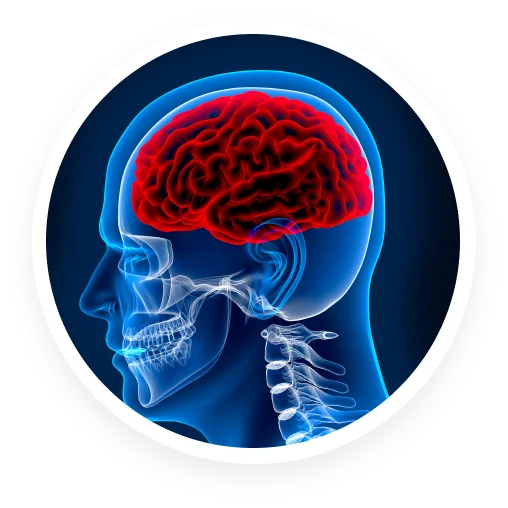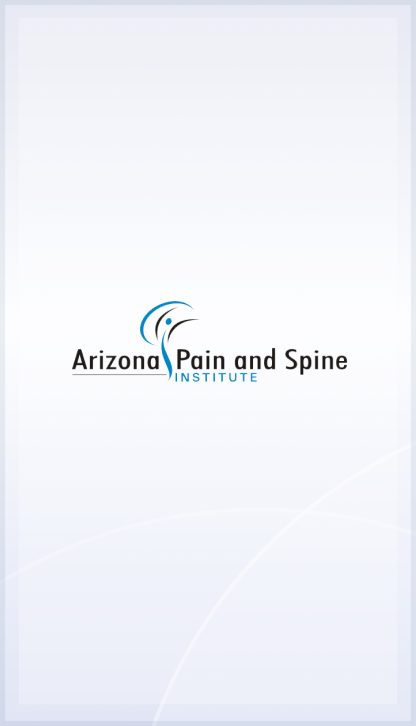
Headaches
Headaches tend to range from dull to acute pain and have definitive causes, unlike migraines which are often debilitatingly painful and stem from causes that are not yet fully understood.
Allen Finney
Review
Young ladies behind the counter were nice and professional. Dr. Khan was and is awesome. You felt he really cared which I have not felt in the 2 years I've been injured. Only reason I did not give it 5 stars was the hard time I had finding it.
Allen Finney
Review
Young ladies behind the counter were nice and professional. Dr. Khan was and is awesome. You felt he really cared which I have not felt in the 2 years I've been injured. Only reason I did not give it 5 stars was the hard time I had finding it.
charles griffin
Review
Have been doing a wonderful job with help with my nerve pain, listen to me, and my request no to be put on pain killers but to help find the problem, always return calls so glad is was referred to them.
Stacey Mejia
Review
Awesome staff Dr. Kahn is a really good Doctor he listens and is a helping man!! I appreciate all of your guys work you do for your patients!! You even call to give reminder the day before your appointment! Again that's so awesome!!
Forrest Hammer
Review
NOTHING BUT THE BEST. ABLE TO WALK. ABLE TO PERFORM TASKS THAT I COULDN'T FOR A LONG TIME, LIKE DAILY WALKING, BENDING OVER, CARRYING GROCERIES AND ENJOYING A MOVIE AT THE CINEMA. THANK YOU DR. ASIM KAHN.
Jeanne Neathery
Review
Dr RYklin is amazing. He treats each patient as if you’re his only one. I’ve been seeing him for 7yrs due to a neck injury. He definitely finds what pain management meets your individual needs. The practitioners are amazing as well!!!!
Marty Klopper
Review
Pain Dr office. Staff is friendly and professional. Lots of paper work to be filled out. Office was clean and neat. Masks on Staff at all times and required for patients to enter. Will be going back for follow-up appointments.
Kim LindL
Review
The staff is very pleasant and Dr. Khan is very good with a needle I've been getting epidurals and shots in my foot and lower back for about 4 years now, he is very good and I would never go to another place
Angel Bussert
Review
The doctor actually listens. I have been a patient for years and love the staff and doctors. I've been to all the locations the country club one is always super busy queen creek location is never packed so I go there.
Guy Romero Jr
Review
Every Staff personnel are very professional, courteous and patient respectful in caring for each medical problem. We live out in Laveen, but finding good patient care are hard to find, Truly Blessed Guy E Romero
John Crosby
Review
They do a great job in today's challenging health care system. Great Nurse Practitioners who work hard. Great support staff. Doctors are expert practitioners. Stable practice. I have over five years personal experience with them.
Stacey Mejia
Review
Awesome staff Dr. Kahn is a really good Doctor he listens and is a helping man!! I appreciate all of your guys work you do for your patients!! You even call to give reminder the day before your appointment! Again that's so awesome!!
Kim LindL
Review
The staff is very pleasant and Dr. Khan is very good with a needle I've been getting epidurals and shots in my foot and lower back for about 4 years now, he is very good and I would never go to another place
Guy Romero Jr
Review
Every Staff personnel are very professional, courteous and patient respectful in caring for each medical problem. We live out in Laveen, but finding good patient care are hard to find, Truly Blessed Guy E Romero
Angel Bussert
Review
The doctor actually listens. I have been a patient for years and love the staff and doctors. I've been to all the locations the country club one is always super busy queen creek location is never packed so I go there.
Forrest Hammer
Review
NOTHING BUT THE BEST. ABLE TO WALK. ABLE TO PERFORM TASKS THAT I COULDN'T FOR A LONG TIME, LIKE DAILY WALKING, BENDING OVER, CARRYING GROCERIES AND ENJOYING A MOVIE AT THE CINEMA. THANK YOU DR. ASIM KAHN.
Jeanne Neathery
Review
Dr RYklin is amazing. He treats each patient as if you’re his only one. I’ve been seeing him for 7yrs due to a neck injury. He definitely finds what pain management meets your individual needs. The practitioners are amazing as well!!!!
Marty Klopper
Review
Pain Dr office. Staff is friendly and professional. Lots of paper work to be filled out. Office was clean and neat. Masks on Staff at all times and required for patients to enter. Will be going back for follow-up appointments.
John Crosby
Review
They do a great job in today's challenging health care system. Great Nurse Practitioners who work hard. Great support staff. Doctors are expert practitioners. Stable practice. I have over five years personal experience with them.
Carol Gravatt Davidson
Review
Absolutely the best place I have been too...so many doctors and always just prescribed pain pills for over 10 years. There is hope, after starting injections I feel so much better. I know I'm in the right place.
Tim Tuzon
Review
Been with Kahn for over a year and wouldn't want to be anywhere else. He is not a pharmacy! He solves the issues instead of hiding them with tons of drugs. Have had multiple procedures to correct the problems.
Brooke Keifer
Review
I was nervous when I brought my mom into the office. They are clearly a very busy office, but the front staff was kind, and the doctor was very confident in a treatment plan. Overall my Mom was very pleased with her visit.
Kari Lynn Plo
Review
I love Dr Ryklin and his assistant Liza! They've always been super good to me and very sympathetic to all my needs! They've done everything they can to make me comfortable and to help me with my pain! I'd refer anyone to them!
Lacey Smithson
Review
This office keeps getting better every time I go. Staff is friendly, doctors are very well educated and good at what they do. And they have helped decrease my mom's back pain by 80%! Everyone with pain should go to this place!
Katty Miller
Review
Dr. Khan is truly carrying, understanding and the VERY BEST AT ADMINISTRATING SGB INJECTIONS!!! I look forward to driving from California to be seen by him. I just can't say enough. Thank you Dr. Khan.
Britt Montoya
Review
Great place. Dr Khan is an awesome Dr and goes above and beyond to help you. Meghan is a wonderful P.A. as well. It says so much to have a Dr that truly cares about your outcome of your procedures. This is a goodhearted Dr
Julie Kierzek (Julz)
Review
Love them all. Dr Ryklin is so helpful and understanding. He takes helping people seriously & I'm extremely grateful for everything he & the PA's & MA's have done for me. Dr Ryklin has gone above & beyond for me.
Delicia N
Review
The team here are genuinely the most helpful providers I have ever had. I went through my worst lupus flare ever last year and mentally did not think I would make it. They truly saved me and made me feel like I could ask for help!
Caroline Copeland
Review
We are Dr. Ryklin's patients. He is an amazing pain management physician. All of the treatments that we receive work extraordinarily well. His entire staff, from front to back, are exceptional. Patient care is really the specialty here.
Eva Linda Hemmerling
Review
I'm a patient Dr. Khan/ NP Liza. I find Doc Liza caring always interested in me as a whole. Body/Mind/soul. Find comfort in her. Staff Dustin,Amanda are tops also. I highly recommend AZ Spine Institute. E.L.H.
Charles Eberhardt
Review
I have been to the Vineyard location 12 times and this is the best Doctor's office I have ever been to. The staff is by far the friendliest and most caring staff around. I actually look forward to my visits. Thanks for everything.
Becky Kirby
Review
For the last 12 years, Arizona pain and spine in Queen Creek with Lisa, has taken care of my pain issues. Without her, I wouldn't be able to manage the excruciating pain I have had after my time in the service

What are headaches?
Because brain tissue does not have pain-sensitive nerves, headaches are actually discomfort felt in the scalp, face, mouth, and neck areas. Headaches have many causes and can be classified into two major categories: Primary and Secondary Headaches.
A primary headache is a significant medical condition in and of itself, while a secondary headache stems from an underlying and related medical condition.
What are the causes and symptoms of headaches?
Headaches come in a variety of types and can be caused by a number of conditions or circumstances. The following is a list of common causes and symptoms but is not an exhaustive one.
Arthritis-Related Headaches
Many people begin to experience arthritis as they age. This is when there is inflammation in the joints that creates stiffness. Headaches can result from arthritis that resides in the head and neck region. The pain tends to worsen when movement occurs and is often treated with muscle relaxers or medications that suppress inflammation.
Caffeine Withdrawal
Roughly 90% of people consume caffeine, typically in the form of beverages or chocolate. Those who consume significant amounts may experience headaches several days after consumption. This is usually the result of blood vessel dilation.
Cerebral Aneurysm
A cerebral aneurysm is often the result of very high blood pressure and could be misinterpreted as a migraine or cluster headache. This is an extremely serious condition where a blood vessel may expand and potentially rupture, causing a stroke. Other signs that may accompany the headache include blurred vision and a stiff neck. Those with symptoms should immediately seek medical care.
Dental-Related Headaches
Often, conditions that impact the teeth or jaw can result in headaches and/or facial area pain. One common cause is bruxism, which is the excessive grinding of the teeth. Another common cause is a temporomandibular joint disorder (TMJ), which is associated with poor alignment of the jaw, arthritis or ligament damage.
High-Altitude Sickness
Many people develop illnesses when they reach higher altitudes, usually when they are more than 3000 feet above sea level. These problems may also be referred to as “acute mountain sickness.” Headaches are among the most common symptoms that occur. The cause is typically a lack of oxygen.
“Ice Pick”
The term “ice pick” refers to those where the sufferer feels intense “stabbing” pain. These may be primary or secondary headaches that last for a few seconds. These episodes may be mild or extreme in severity and it is important to promptly seek medical attention.
Menstrual Headaches
These may occur among women when there are changes relating to estrogen and progesterone. Menstrual migraines occur in some women before or in the early days of menstruation. This is in response to a drop in the levels of both of these hormones.
Some women who use birth control may also be more prone to headaches of varying severity. This is also associated with fluctuations that occur in hormone levels. Post-menopausal women may benefit from using an estrogen patch. This serves to maintain a low but steady estrogen level.
“Rebound” Headaches
A rebound headache results from using excessive medication for a headache. They are most likely to occur after taking some type of analgesic or other treatment for more than a week. Often the problem will begin after the medication is discontinued. These are commonly treated with dihydroergotamine (DHE) and the majority of people experience improvement.
Sinus-Related Headaches
The sinus cavities exist within the region of the cheekbones, nose, and forehead. The sinuses may become irritated, leading to inflammation and feelings of pressure, and head pain. Some people will develop a painful headache during these episodes. Sinus headaches are commonly mistaken as migraines and vice versa.
Spinal Headaches
One type of headache that can result in significant pain is a spinal headache. These may occur when the spinal fluid that is responsible for cushioning begins leaking. The fluid drainage may cause pain in the nerves and tissue in the area of the brain. A spinal headache may last for a short period of time or extend for several days.
Many people find pain relief from lying down. The pain may reappear when a person sits up or stands. Roughly 32% of people who undergo a spinal tap develop headaches. A spinal tap or lumbar puncture may be needed to make a diagnosis or to administer anesthesia.
Thunderclap Headaches
One type of headache that can be very painful is a “thunderclap” headache. These tend to occur suddenly and last for several minutes. Some people become nauseous. This may be a sign of internal bleeding in the area of the brain and you should promptly seek medical attention.
What causes fibromyalgia?
Doctors and researchers remain un-sure about why fibromyalgia develops. They have considered several key factors that may play a role in its development. It has been associated with genetics and has also been linked to certain types of infections. However, it was also observed to have been triggered by both physical and or emotional trauma. Nevertheless, in some cases, a symptom slowly builds up over time without one triggering event.
There are, however, risk factors that may contribute to the development of fibromyalgia. These factors are as follows: sex (because it is more common in women than in men), family history, and other disorders (such as lupus, osteoarthritis and rheumatoid arthritis).
How are headaches treated?
There are many different types of prescription medications used for treatment. Ergotamines are a class that is prescribed specifically for migraines. They function by causing contraction of the blood vessels that surround the brain. These drugs tend to be fast-acting and are administered in the form of a pill, tablet, injection, and others. Commonly prescribed ergotamines include dihydroergotamine (DHE-45, Migranal), ergotamine (Ergomar), and methysergide (Sansert).
A class of drugs known as triptans have emerged more recently and has proven to be effective in treating migraines. They increase the level of serotonin within the brain to reduce pressure on the blood vessels and alleviate inflammation. They are most commonly administered in the form of pills, dissolving tablets and nasal sprays. Common triptans include almotriptan (Axert), eletriptan (Relpax), frovatriptan (Frova), naratriptan (Amerge), and more.
Opioids are tightly controlled pain medications often prescribed when other medications have proven to be ineffective. These are a potent class of medications that pose safety concerns including overdose and addiction. Some of the most common opioids include codeine, meperidine (Demerol), morphine, and oxycodone (OxyContin).
AZ Pain and Spine Institute
Headaches Treatments
Here at Arizona Pain and Spine Institute, we improve our patients’ quality of life by alleviating and managing their pain. Some of our Headaches treatments include:

Why choose AZ Pain and Spine Institute to treat your Headaches?
We have a team of medical practitioners, pain management doctors, and staff who are experts on pain management, including Headaches. We use state-of-the-art technology and effective approaches in achieving our mission. We care about your well-being and are committed to making your life pain-free.
